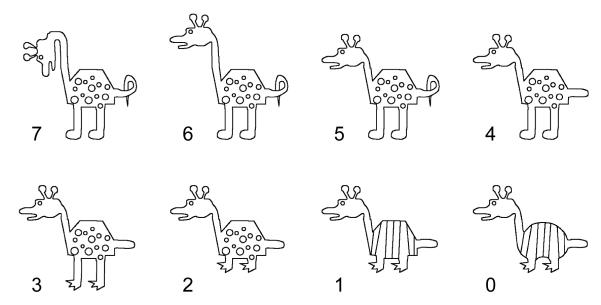Figure 1.
Examples of the cartoon-animal stimuli used in Experiment 1. The animal at the top-left is a randomly chosen prototype stimulus. Its randomly chosen features would be the typical features for a given subject. The remaining stimuli in the figure show cartoon animals with decreasing numbers of features in common with the prototype. (Each animal is labeled in terms of the number of variable features that it has in common with the prototype.) Moving from left to right and then from the top to the bottom row, the features switched from their typical to their atypical value are: head direction, neck length, tail shape, feet shape, leg length, body markings, and body shape. The animal at the bottom right is the anti-prototype. In the present example, the feature values of ear shape and face type are held fixed across all animals. Those features might be variable features for another subject.

